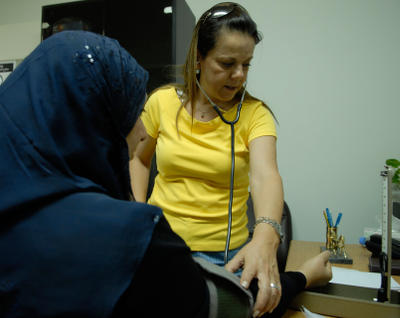Using AI to control energy for indoor agriculture
30 September 2024
Published online 30 September 2015
A global health study finds non-communicable diseases now place the greatest health burden on the Arab World.

© Eddie Gerald / Alamy Stock Photo
High body mass index is the chief problem in nearly all Arab states, followed by high fasting plasma glucose and high systolic blood pressure. Yemen and Sudan were the exception, with childhood malnutrition and unsafe water creating the greatest risks of mortality.
The shift of the health burden to non-communicable diseases is coupled "with a rapid change in risk factors such as increased obesity, lower levels of physical activity, increased smoking, higher blood pressure and plasma glucose," says Ali Mokdad, professor of global health at the Institute for Health Metrics and Evaluation, Washington University and one of the authors.
In order to measure the overall disease burden on any country, the researchers used the disability-adjusted life year (DALY) measure, which express the number of years lost due to ill-health, disability or early death. In the case of the UAE, all top-10 risks associated with the highest number of DALYs have multiplied exponentially over the past 20 years.
High body mass index topped the UAE risk chart for both genders since the start of the study, but has grown by 275% since 1990. That accounts for 137,485 DALYs, compared to 36,613 in 1990. High fasting plasma glucose, high systolic blood pressure and high total cholesterol remained among the top five risks and were the subject of similar exponential trends.
Sadek Aly Abdelaal, ex-advisor to the Egyptian minister of health in the mid-1990s and former paediatrician at Cairo University Children Hospital, says Arab countries have been in a "transitional phase" over the past two decades. “In the 1990s, Arab countries had to deal mostly with infectious diseases,” says Abdelaal, who was not involved in the study. “Since the 2000s, there has been a notable shift to a much higher prevalence of diseases such as hypertension, diabetes, obesity, tumours and depression.”
The study analysed 79 risk factors divided into three distinct categories: behavioural, environmental and occupational, and metabolic. It attributes 57% of global deaths and 41% of global disability-adjusted life-years (DALYs) to these risks, and calls for worldwide effort to implement preventive measures.
Alan Lopez, an epidemiologist at the University of Melbourne, Australia, and another of the study's authors, points to a lack of progress in reducing non-communicable disease risk factors despite the clear evidence of the impact on quality of life. “It will take much more effective leadership from WHO and much greater recognition of the need for policy changes by governments.”
Mokdad explains that Arab region governments have been investing in treatment and medical care, but less so on prevention. “We need to find a balance between what is immediate, like treating sick people, and what is important, which is preventing future diseases."
The study will be produced annually, and the data it provides could be used to monitor the impact of any interventions taken by policymakers to improve health.
doi:10.1038/nmiddleeast.2015.175
Forouzanfar, M.H. et al, Global, regional, and national age–sex specific all-cause and cause-specific mortality for 240 causes of death, 1990–2013: a systematic analysis for the Global Burden of Disease Study 2013. The Lancet. http://dx.doi.org/10.1016/S0140-6736(14)61682-2 (2015)
Stay connected: